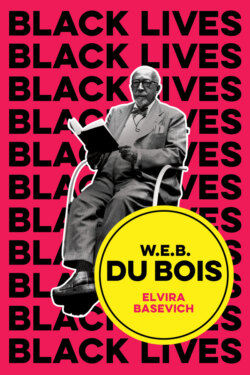Читать книгу W.E.B. Du Bois - Elvira Basevich - Страница 15
Mourning and moral faith
ОглавлениеIn Souls, Du Bois shared his personal experience of the loss of his firstborn. The reader plunges with his young family into grief, from which his partner, Nina, never fully recovered, “never forgiv[ing] God for the unhealable wound.”28 But the white world, Du Bois wrote, saw no one worth mourning and closed in around them like a devouring mouth: “The busy city dinned about us; they did not say much, those pale-faced hurrying men and women; they did not say much – they only glanced and said, ‘N******s!’”29 To mourn is to feel the value of a life lost; public rituals of mourning show respect and a willingness to forge fellowship. Sharing in grief can even open a path to rebuilding shattered trust.
Of course, it is naive to assume that state-sanctioned rituals of mourning could spontaneously reconstitute a political community, especially if few measures are taken to redress structural inequalities. The philosopher Linda Alcoff cautions that even well-meaning whites are often ill prepared to do the difficult cognitive and emotional labor of interracial struggle. They would rather be portrayed as the saviors of the dark world, rather than an ally or a friend.30 And yet a republic that once celebrated lynchings with a family picnic – and sneered and continues to sneer at the death of black children – cannot forgo learning to mourn the lives lost to racial violence. In 1963, Baldwin reflected: “Morally, I think this nation should be, for the foreseeable future, in mourning.”31 After another unarmed black teenager, Mike Brown, was killed by a white police officer in Ferguson, Missouri, black residents built a makeshift memorial of flowers and teddy bears for Brown. The memorial was repeatedly run over by police vehicles; on one occasion, a police officer let his dog urinate on it.32 “Later that night,” Keeanga-Yamahtta Taylor writes, “the uprising began.”33 The destruction of Brown’s memorial precipitated days of intense protests by black Ferguson residents, on whom the police fired tear gas and rubber bullets.
In his elegant defense of moral faith in the light of loss, Melvin Rogers notes: “The quest to transform the political landscape indicates that the legitimacy of democracy demands faith that sacrifice will be redeemed. Here the word ‘redeem’ indicates the possibility of mending wounds at the heart of the community, the end result of which is to include those who have otherwise been excluded from political life.”34 Likewise, Du Bois defined the power and limit of his faith in democracy: the moral redemption of the republic demands ongoing engagement with the history of black, Latinx, and indigenous losses. Though he had faith that it is possible to heal the wound racism has left on the republic, he knew white Americans would need to cross an uncharted “spiritual” territory to learn to atone for centuries of violence, a political gesture that has never been offered. The polity has not yet learned to mourn the dead. It has not even learned to be troubled by its direct role in the killings.
In the Jewish tradition, after a burial one observes seven days of mourning. The practice is called “sitting shiva.” Mourners cover all the mirrors in their house and sit on low stools to show their humility before the dead. Unlike sitting shiva, there is no clear procedure in a constitutional republic of how to mourn or when to begin. Though the republic will never finish mourning the lives lost to racial violence, it is necessary and possible to begin the process of mourning. We must begin, as ever, with the conviction that black lives matter.
Every year on Martin Luther King Day, militia groups descend on Richmond, Virginia to protest gun-control legislation. That event organizers choose to hold their gun rights rally on a federal holiday that honors King suggests two things. First, the power of the Black Lives Matter movement remains its forceful assertion of the right of blacks to exist. Second, the forceful assertion of the right of blacks to exist is taken as a threat not just to the law enforcement community but to a fragile whiteness invested in the preservation of the color line. Their fear and insecurity betray them. The overwhelmingly white (and mostly male) militiamen nurse an elemental dread of black being-in-the-world. In the judgment of Du Bois’s John Jones, the men who hold the noose remain “pitiful.” And yet the losses they continue to inflict are incalculable, rendering precarious the day-to-day existence of communities of color. Born to former slaves, the poet Paul Dunbar reflects on what it is like to live a life to which one is made to feel unentitled. He notes that it feels like paying a debt: “This is the debt I pay just for one riotous day, / years of regret and grief, sorrow without relief / […] / Slight was the thing I bought, small was the debt I thought, / poor was the loan at best – God! but the interest!”35
